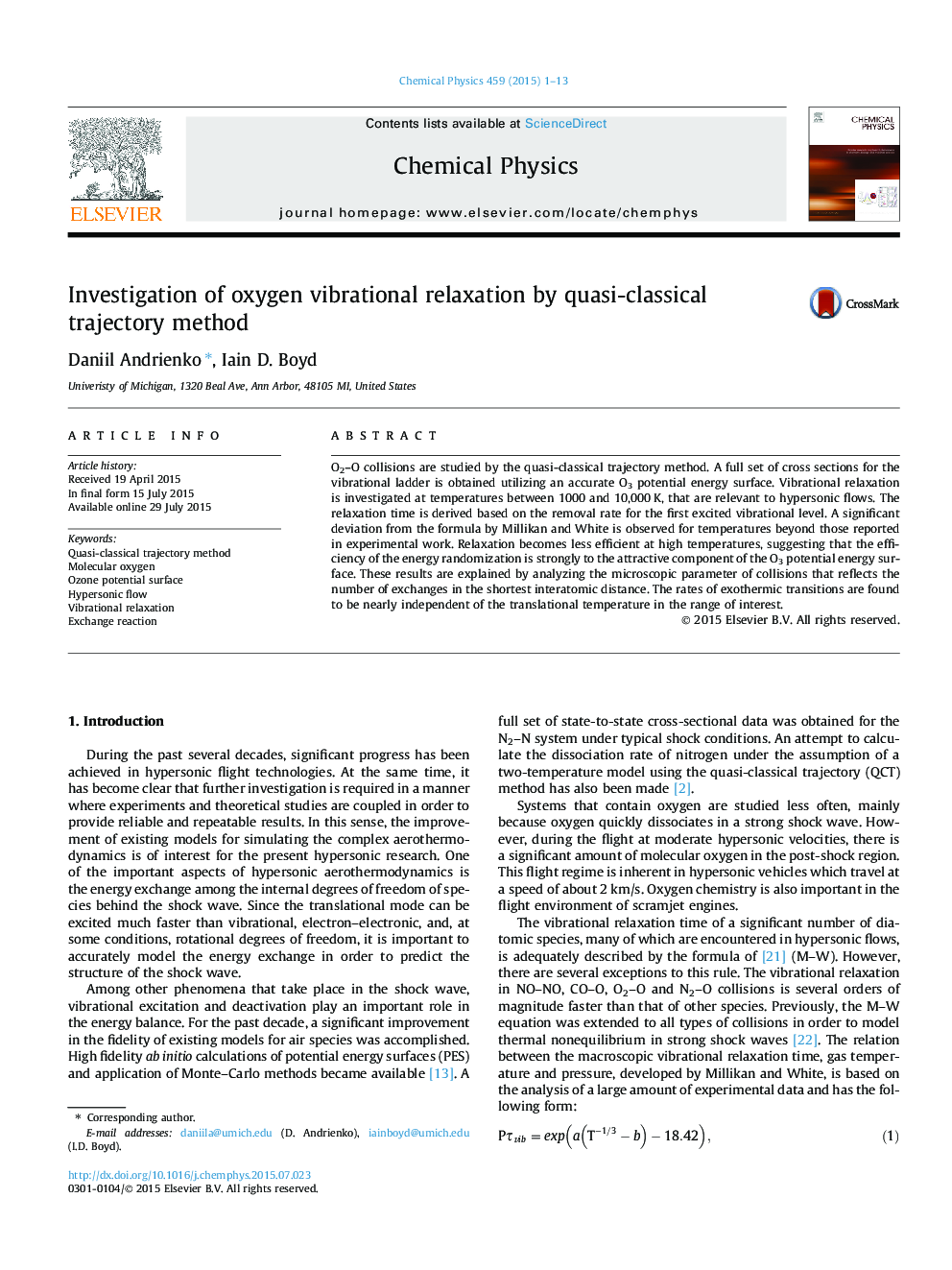| Article ID | Journal | Published Year | Pages | File Type |
|---|---|---|---|---|
| 5373233 | Chemical Physics | 2015 | 13 Pages |
â¢Importance of attraction for the O2-O energy exchange in hypersonic flows.â¢O2-O vibrational relaxation time cannot be described by the Millikan-White equation.â¢Weak dependence of exothermic transition rates on translational temperature.â¢Multiquantum jumps in molecular oxygen occur mostly via the exchange reaction.
O2-O collisions are studied by the quasi-classical trajectory method. A full set of cross sections for the vibrational ladder is obtained utilizing an accurate O3 potential energy surface. Vibrational relaxation is investigated at temperatures between 1000 and 10,000Â K, that are relevant to hypersonic flows. The relaxation time is derived based on the removal rate for the first excited vibrational level. A significant deviation from the formula by Millikan and White is observed for temperatures beyond those reported in experimental work. Relaxation becomes less efficient at high temperatures, suggesting that the efficiency of the energy randomization is strongly to the attractive component of the O3 potential energy surface. These results are explained by analyzing the microscopic parameter of collisions that reflects the number of exchanges in the shortest interatomic distance. The rates of exothermic transitions are found to be nearly independent of the translational temperature in the range of interest.
Graphical abstractDownload full-size image
